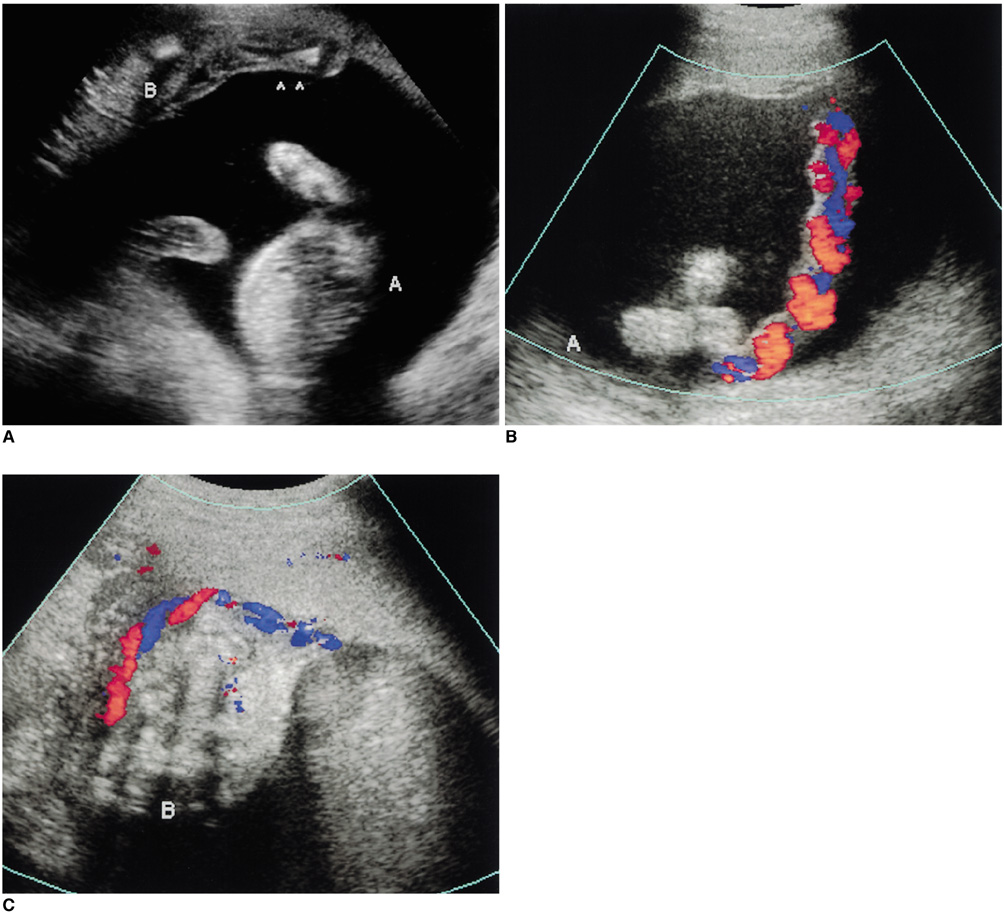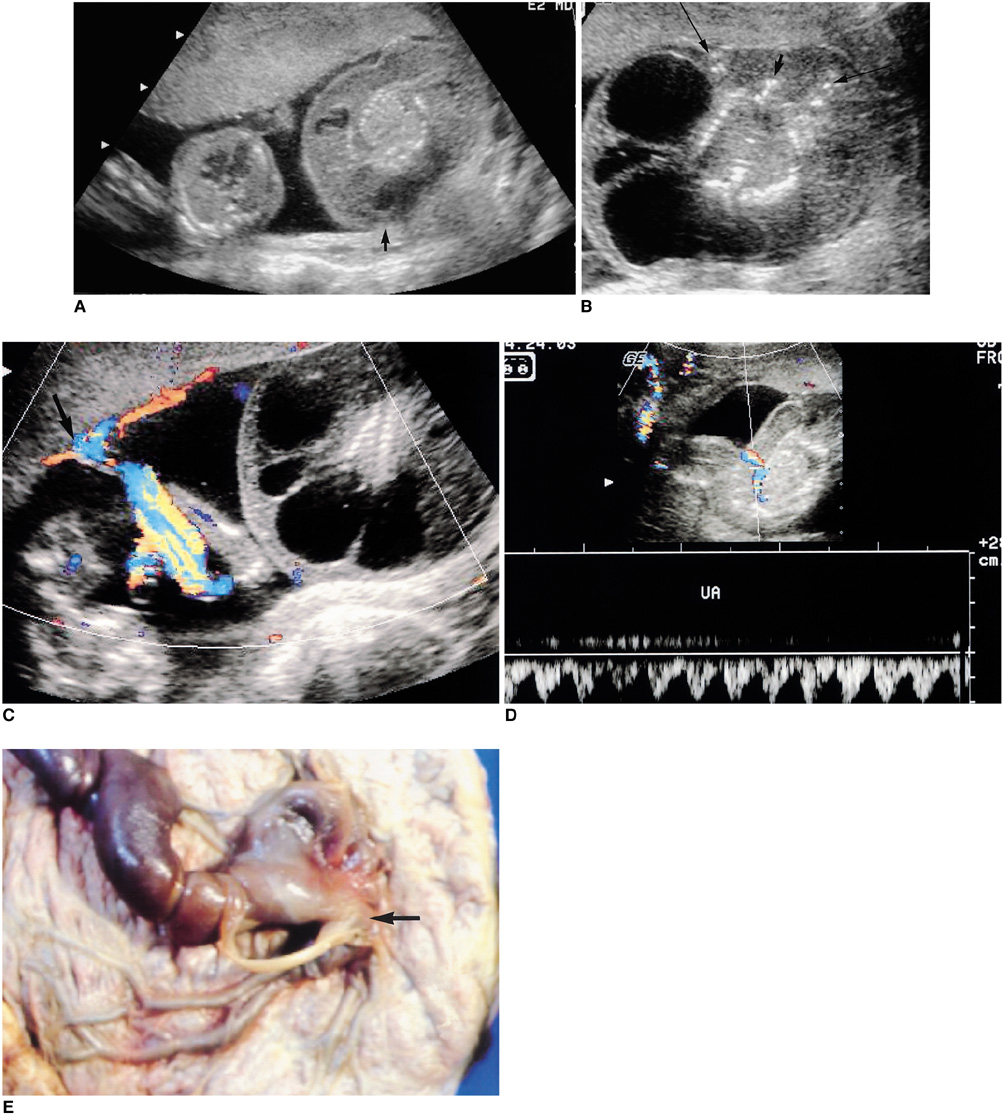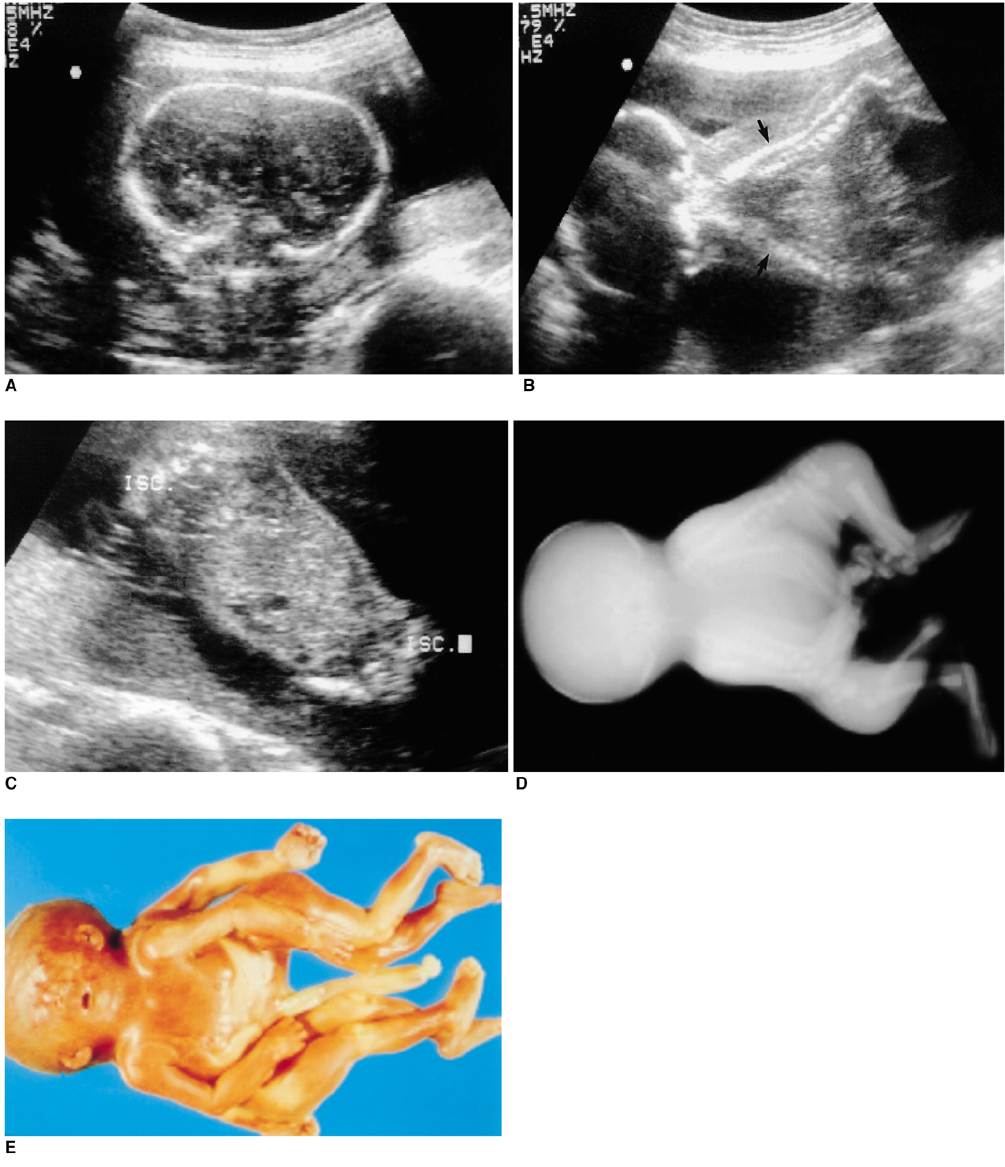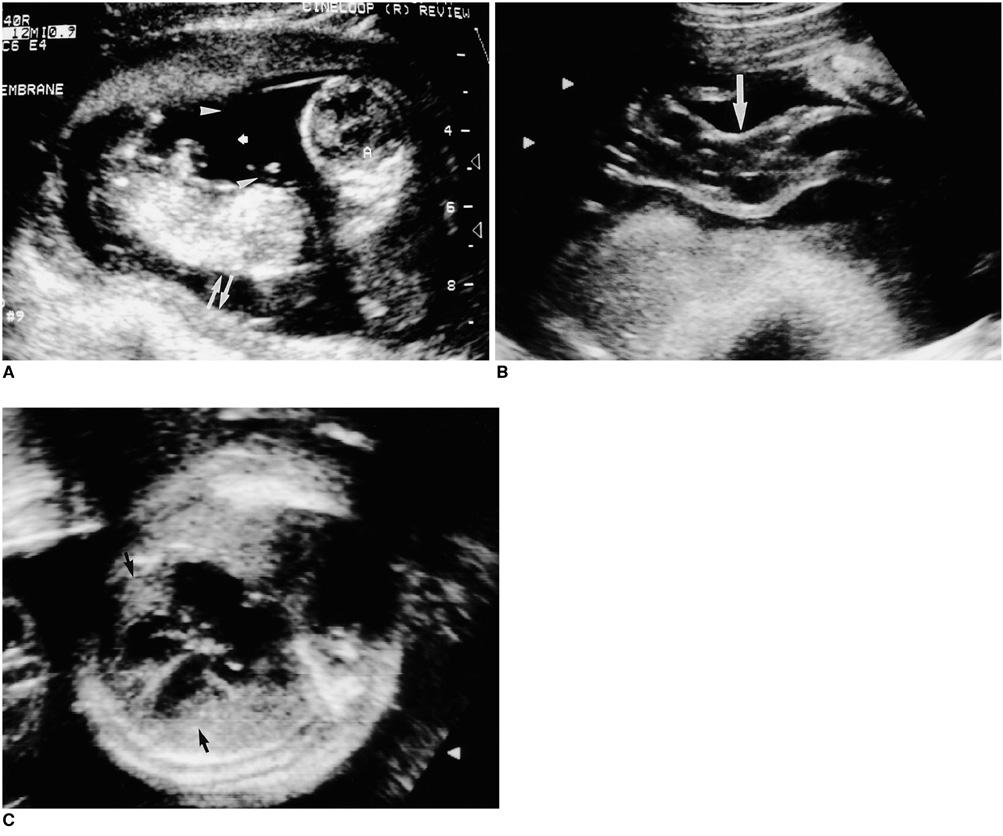Korean J Radiol.
2003 Mar;4(1):54-60. 10.3348/kjr.2003.4.1.54.
Complications Arising in Twin Pregnancy: Findings of Prenatal Ultrasonography
- Affiliations
-
- 1Department of Radiology, Samsung Cheil Hospital, Sungkyunkwan University School of Medicine, Seoul Korea. radjycho@samsung.co.kr
- 2Department of Diagnostic Pathology, Samsung Cheil Hospital, Sungkyunkwan University School of Medicine, Seoul Korea.
- KMID: 754043
- DOI: http://doi.org/10.3348/kjr.2003.4.1.54
Abstract
- Multifetal gestations are high-risk pregnancies involving higher perinatal morbidity and mortality, and are subject to unique complications including twin oligohydramnios-polyhydramnios sequence, twin-to-twin transfusion syndrome, acardiac twins, conjoined twins, co-twin demise, and heterotopic pregnancies. The purpose of this study is to describe the prenatal ultrasonographic and pathologic findings of these complications.
Keyword
Figure
Reference
-
1. Divon MY, Weiner Z. Ultrasound in twin pregnancy. Semin Perinatol. 1995. 19:404–412.2. Mahony BS, Petty CN, Nyberg DA, Luthy DA, Hickok DE, Hirsch JH. The "stuck twin" phenomenon: ultrasonographic findings, pregnancy outcome, and management with serial amniocenteses. Am J Obstet Gynecol. 1990. 163:1513–1522.3. Bruner JP, Rosemond RL. Twin-to-twin transfusion syndrome: a subset of the twin oligohydramnios-polyhydramnios sequence. Am J Obstet Gynecol. 1993. 169:925–930.4. Bruner JP, Anderson TL, Rosemond RL. Placental pathophysiology of the twin oligohydramnios-polyhydramnios sequence and the twin-twin transfusion syndrome. Placenta. 1998. 19:81–86.5. Farley CL, Cox LA, Long BW. Ultrasound and twin-twin transfusion syndrome. Radiol Technol. 2000. 72:95–100.6. Hecher K, Ville Y, Nicolaides KH. Fetal arterial Doppler studies in twin-twin transfusion syndrome. J Ultrasound Med. 1995. 14:101–108.7. Van Allen MI, Smith DW, Shepard TH. Twin reversed arterial perfusion (TRAP) sequence: a study of 14 twin pregnancies with acardius. Semin Perinatol. 1983. 7:285–293.8. Chen CP, Shih SL, Liu FF, Jan SW, Lin YN, Lan CC. Skeletal deformities of acardius anceps: the gross and imaging features. Pediatr Radiol. 1997. 27:221–225.9. Mohanty C, Mishra OP, Singh CP, Das BK, Singla PN. Acardiac anomaly spectrum. Teratology. 2000. 62:356–359.10. Guttmacher AF, Nichols BC. Teratology of conjoined twins. Birth Defects. 1967. 3:3–9.11. Lam YH, Sin SY, Lam C, Lee CP, Tang MH, Tse HY. Prenatal sonographic diagnosis of conjoined twins in the first trimester: two case reports. Ultrasound Obstet Gynecol. 1998. 11:289–291.12. Kilby MD, Govind A, O'Brien PM. Outcome of twin pregnancies complicated by a single intrauterine death: a comparison with viable twin pregnancies. Obstet Gynecol. 1994. 84:107–109.13. Petersen IR, Nyholm HC. Multiple pregnancies with single intrauterine demise: Description of twenty-eight pregnancies. Acta Obstet Gynecol Scand. 1999. 78:202–206.14. Tal J, Haddad S, Gordon N, Timor-Tritsch I. Heterotopic pregnancy after ovulation induction and assisted reproductive technologies: a literature review from 1971 to 1993. Fertil Steril. 1996. 66:1–12.
- Full Text Links
- Actions
-
Cited
- CITED
-
- Close
- Share
- Similar articles
-
- Rare Complications with Monochorionic Twins: Ultrasonography and Pathology Correlations
- Prenatal Diagnosis of Acardiac Twin : A Case Report
- Ultrasonographic Diagnosis of Conjoined Twins ; A Case Report of Two Cases
- Prenatal diagnosis of epignathus with multiple malformations in one fetus of a twin pregnancy using three-dimensional ultrasonography and magnetic resonance imaging
- Acardiac Twin Presented as a Lower Extremity: Case Report with Serial Prenatal Ultrasonography







